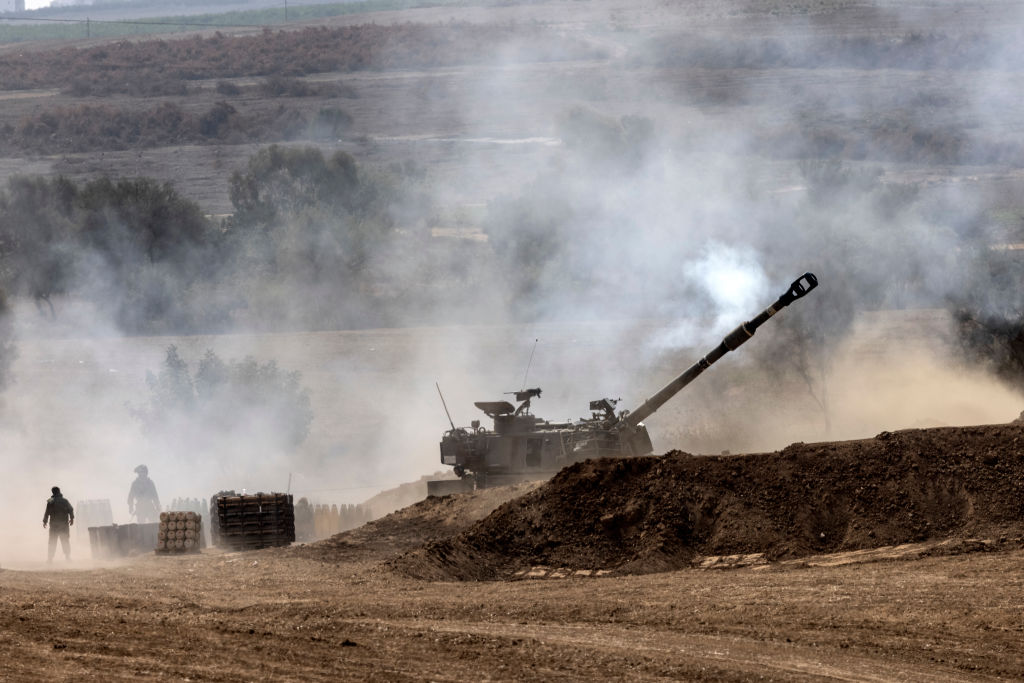It was always a matter of when, not if.
It wasn’t a matter of if, but when. Israel launched its largest attacks on Hamas in Gaza Friday, October 27. Initially, the Israel Defense Force (IDF) made short, limited incursions into Gaza. The impression was the IDF was testing enemy defenses. As Israel’s dismounted infantry, led by tanks and armored personnel carriers, expanded the attack overnight and into Saturday, it was clear the IDF had begun taking the fight to Hamas terrorists on the ground. Now the military warns once again that Israeli operations are still expanding, calling for Palestinian residents to head south with increasing urgency.

(Heidi Levine for The Washington Post via Getty Images).
Following the heinous attack on innocent civilians in southern Israel, the anticipated operation to destroy Hamas infrastructure, leadership, and foot soldiers is underway. Side-by-side, Prime Minister Benjamin Netanyahu and Israeli Defense Minister Yoav Gallant, in an address to the people of Israel, announced that the IDF had begun what they referred to as the “second stage of the war.” The first stage has been heavy bombardment with precision ordinance hammering Hamas command and control facilities, munitions storage warehouses, and terrorist leadership headquarters. Additionally, all communications have been cut between Gaza and the outside world – no cell phone or internet connectivity.
Israel Managing Expectations
In a Politico report, Alexander Ward and Paul McLeary explained that communiques from the IDF have been very subdued in describing combat troops’ engagement activities. IDF spokesman Daniel Hagari has been managing public expectations. Ward and McLeary said:
“The careful wording belies reports of heavy fighting by relatively small IDF units who have pushed into Gaza, supported by tanks, helicopters and air strikes. While intense, the runs are not the massive invasion the IDF has positioned itself to launch and indicate the war might be fought in smaller, targeted engagements rather than a massive push through the densely populated enclave.”
The systematic and surgical approach to rooting out and destroying Hamas employed by the Israeli forces while attempting to limit civilian casualties is an immense challenge. It is a demanding task, particularly when the enemy uses civilians as shields. When these noncombatants are killed or injured, the Hamas disinformation machine immediately broadcasts to the world how culpable and bloodthirsty Israel is. A Fox News account describes how Hamas has engaged in an even more vile practice:
“Israel has long voiced outrage at Palestinian militants’ strategic placement of military infrastructure within hospital complexes. The IDF released a series of graphics depicting the suspected dimensions of the underground complex. It is not uncommon for Hamas militants to intentionally embed military infrastructure into civilian spaces in order to make targeted strikes collaterally damaging.”
Urban warfare like what the IDF encounters in Gaza is the most arduous and hazardous combat for infantry and armored units. John Spencer, writing for the Modern War Institute at the US Army West Point Military Academy, said, “Combat in dense urban terrain is the most complex and difficult type of warfare a military can be directed to conduct.” Such fighting is complicated by “the dense physical terrain, the presence of noncombatants, restraints on the use of force required by laws of war, and the ubiquitous and real-time global attention on the conduct of a battle.”
Destroyed Buildings: Dangerous Hiding Places for Hamas
Furthermore, the destroyed buildings create hiding places for Hamas snipers and other terrorists carrying anti-tank guided missiles and rocket-propelled grenades. Since there is little regard for life on the part of Hamas terrorists, Israeli ground forces can expect to encounter Hamas foot soldiers and sympathetic civilians clad in suicide vests charging into units and attempting to kill as many Israelis as possible. Hamas also has a significant quantity and variety of combat drones, ranging from large drones like those Iran provided Russia to use in Ukraine to smaller commercial quad-copters re-purposed to carry munitions. “As a rapidly growing feature of warfare, recent urban battles have incorporated drones more to a much greater degree than anything the IDF has faced before,” according to Spencer.
The labyrinthine network of tunnels throughout Gaza also presents a problem for Israel. A concentrated aerial attack on suspected tunnel locations collapsing the narrow cave-like structures will help, but getting all of them probably isn’t possible.
One aspect of the IDF’s expanding operation in Gaza that will be supportive to the morale of ground troops is the Israeli government’s unanimous cabinet approval of the long-awaited advance into the Hamas stronghold. Holding off only gave the terrorists an opportunity to gather and coordinate resources, regroup fighters, and disperse them to tactically advantageous points. Israel is prepared for a slugfest and is not naïve as to what they are up against.

